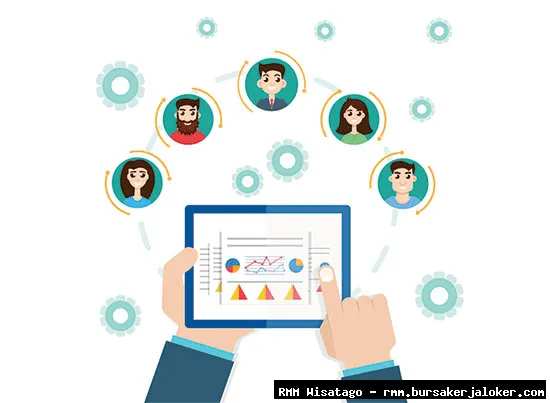RMM For Small Business: Complete Guide, Features and Details
Running a small business is a constant juggling act. You’re managing sales, marketing, customer service, and IT, often with limited resources. It’s easy for IT issues to fall by the wayside until they become major problems. That’s where Remote Monitoring and Management (RMM) comes in. RMM solutions can be a game-changer for small businesses, providing proactive IT management and preventing costly downtime.
Think of RMM as a virtual IT department working behind the scenes. It allows IT professionals (either in-house or a managed service provider) to remotely monitor your systems, identify potential problems before they disrupt your business, and resolve issues quickly and efficiently. This proactive approach can save you time, money, and a whole lot of headaches.

This article will delve into the world of RMM for small businesses, exploring its key features, benefits, and how to choose the right solution for your specific needs. We’ll cover everything from basic monitoring to advanced automation, empowering you to make informed decisions about your IT infrastructure and focus on what truly matters: growing your business.
RMM For Small Business: Complete Guide, Features and Details
RMM (Remote Monitoring and Management) is a software solution designed to help IT professionals remotely monitor and manage client systems and networks. For small businesses, this translates into a proactive approach to IT management that can significantly improve efficiency, reduce downtime, and ultimately save money. Instead of reacting to problems as they arise, RMM allows for the identification and resolution of issues before they impact business operations.
What Does RMM Actually Do?
At its core, RMM provides a centralized platform for managing all of a small business’s IT assets. This includes servers, desktops, laptops, mobile devices, and network devices. The RMM software is typically installed on each endpoint (the device being monitored) and reports back to a central management console. From this console, IT professionals can:
- Monitor system performance: Track CPU usage, memory utilization, disk space, network traffic, and other key metrics.
- Detect and resolve issues: Receive alerts when problems occur, such as a server going down, a hard drive filling up, or a security threat being detected.
- Automate tasks: Schedule routine maintenance tasks, such as software updates, patch management, and backups.
- Provide remote support: Remotely access and control devices to troubleshoot issues and provide support to users.
- Manage security: Implement and enforce security policies, such as password requirements and antivirus updates.
- Generate reports: Track IT performance, identify trends, and provide insights into the health of the IT infrastructure.
Key Features of RMM Solutions
While the specific features vary between RMM vendors, there are several core functionalities that are essential for any small business considering an RMM solution.
Real-time Monitoring and Alerting
This is the foundation of any RMM solution. It involves continuously monitoring the health and performance of all IT assets and generating alerts when predefined thresholds are exceeded or when potential problems are detected. For example, an alert might be triggered if a server’s CPU usage consistently exceeds 80%, indicating a potential performance bottleneck. The ability to customize alerts based on specific needs and priorities is crucial.
Patch Management
Keeping software up to date with the latest security patches is critical for protecting against vulnerabilities. RMM solutions automate the process of identifying and deploying patches to all managed devices. This includes operating system updates, application updates, and security patches. Automated patch management significantly reduces the risk of security breaches and ensures that systems are running the latest and most secure versions of software.
Remote Access and Control
The ability to remotely access and control devices is essential for troubleshooting issues and providing support to users. RMM solutions provide secure remote access capabilities, allowing IT professionals to connect to devices from anywhere in the world. This feature enables quick resolution of problems, reduces downtime, and eliminates the need for on-site visits in many cases. Look for solutions that offer robust security features, such as multi-factor authentication and session recording.
Automation and Scripting
Automation is key to improving efficiency and reducing manual effort. RMM solutions allow IT professionals to automate routine tasks, such as software installations, configuration changes, and system maintenance. This is typically achieved through scripting, allowing complex tasks to be executed with a single command. Automation frees up IT staff to focus on more strategic initiatives and reduces the risk of human error.
Reporting and Analytics
RMM solutions generate detailed reports on the health and performance of the IT infrastructure. These reports provide valuable insights into trends, identify potential problems, and help to justify IT investments. Reports can be customized to track specific metrics and can be used to demonstrate compliance with industry regulations. Look for solutions that offer a variety of reporting options and allow for easy data export.
Backup and Disaster Recovery
While not always a core feature of RMM, integration with backup and disaster recovery solutions is highly beneficial. This allows for automated backups of critical data and systems, ensuring that data can be quickly restored in the event of a disaster. RMM can monitor the status of backups and alert IT professionals if there are any issues. This integration provides a comprehensive approach to data protection and business continuity.
Benefits of RMM for Small Businesses
Implementing an RMM solution can bring numerous benefits to small businesses, impacting everything from IT efficiency to overall business productivity.
Reduced Downtime
By proactively monitoring systems and identifying potential problems before they cause downtime, RMM can significantly reduce the amount of time that businesses are unable to operate due to IT issues. This translates into increased productivity and revenue.

. Managing these interconnected business processes effectively often requires a comprehensive system ERP which can streamline workflows and enhance data visibility
.
Improved IT Efficiency
Automation of routine tasks, such as patch management and software updates, frees up IT staff to focus on more strategic initiatives. This improves IT efficiency and allows businesses to get more value from their IT investments.
Enhanced Security
RMM solutions help to improve security by automating patch management, enforcing security policies, and providing real-time threat detection. This reduces the risk of security breaches and protects sensitive data.
Lower IT Costs
While there is an initial investment in an RMM solution, the long-term cost savings can be significant. Reduced downtime, improved IT efficiency, and enhanced security all contribute to lower IT costs.
Better Scalability
RMM solutions make it easier to manage a growing IT infrastructure. As a business expands, RMM can be scaled to accommodate new devices and users without requiring significant additional IT resources.
Proactive IT Management
RMM shifts IT management from a reactive to a proactive approach. Instead of waiting for problems to occur, IT professionals can identify and resolve issues before they impact business operations. This results in a more stable and reliable IT environment.
Choosing the Right RMM Solution
Selecting the right RMM solution for your small business requires careful consideration of your specific needs and requirements. Here are some key factors to consider:
Business Size and Complexity
The size and complexity of your IT infrastructure will influence the type of RMM solution that is best suited for your business. Smaller businesses with simple IT environments may be able to get by with a basic RMM solution, while larger businesses with more complex IT environments will need a more robust and feature-rich solution.
Specific IT Needs
Consider your specific IT needs and requirements. Do you need advanced security features? Do you need extensive reporting capabilities? Do you need integration with other IT tools? Make a list of your must-have features and use this list to evaluate different RMM solutions.
Budget
RMM solutions are available at a variety of price points. Determine your budget and look for solutions that offer the best value for your money. Consider both the initial cost of the software and the ongoing maintenance and support costs.
Ease of Use
Choose an RMM solution that is easy to use and manage. The interface should be intuitive and the documentation should be clear and comprehensive. Consider signing up for a free trial to test out different RMM solutions before making a decision.
Vendor Reputation and Support
Research the vendor’s reputation and read reviews from other users. Make sure the vendor offers reliable support and has a track record of providing excellent customer service. A responsive and helpful support team is essential for resolving issues and getting the most out of your RMM solution.
Integration Capabilities
Ensure that the RMM solution integrates well with your existing IT tools and systems. This will streamline your IT operations and prevent data silos.

RMM and Managed Service Providers (MSPs)
Many small businesses choose to outsource their IT management to a Managed Service Provider (MSP). MSPs use RMM solutions to remotely manage their clients’ IT infrastructure. Partnering with an MSP can provide access to a team of experienced IT professionals and can free up internal resources to focus on other business priorities. When choosing an MSP, be sure to inquire about the RMM solution they use and the level of service they provide.
Conclusion
RMM solutions offer a powerful and cost-effective way for small businesses to manage their IT infrastructure. By proactively monitoring systems, automating routine tasks, and providing remote support, RMM can help to reduce downtime, improve IT efficiency, enhance security, and lower IT costs. By carefully considering your specific needs and requirements, you can choose the right RMM solution for your business and reap the many benefits it has to offer. Whether you manage your IT in-house or partner with an MSP, RMM is an essential tool for ensuring a stable, secure, and reliable IT environment.
Frequently Asked Questions (FAQ) about RMM for small business
What is RMM for small business?
RMM for small business is a topic that many people search for information about. This article provides comprehensive and reliable information about RMM for small business to help you understand it better.
Why is RMM for small business important?
RMM for small business has an important role because it can help you get the information you need. Understanding RMM for small business will provide benefits and advantages for you.
How can I get more information about RMM for small business?
For more information about RMM for small business, you can read the complete article above or contact relevant official sources. We also recommend that you always update your information as details can change over time.